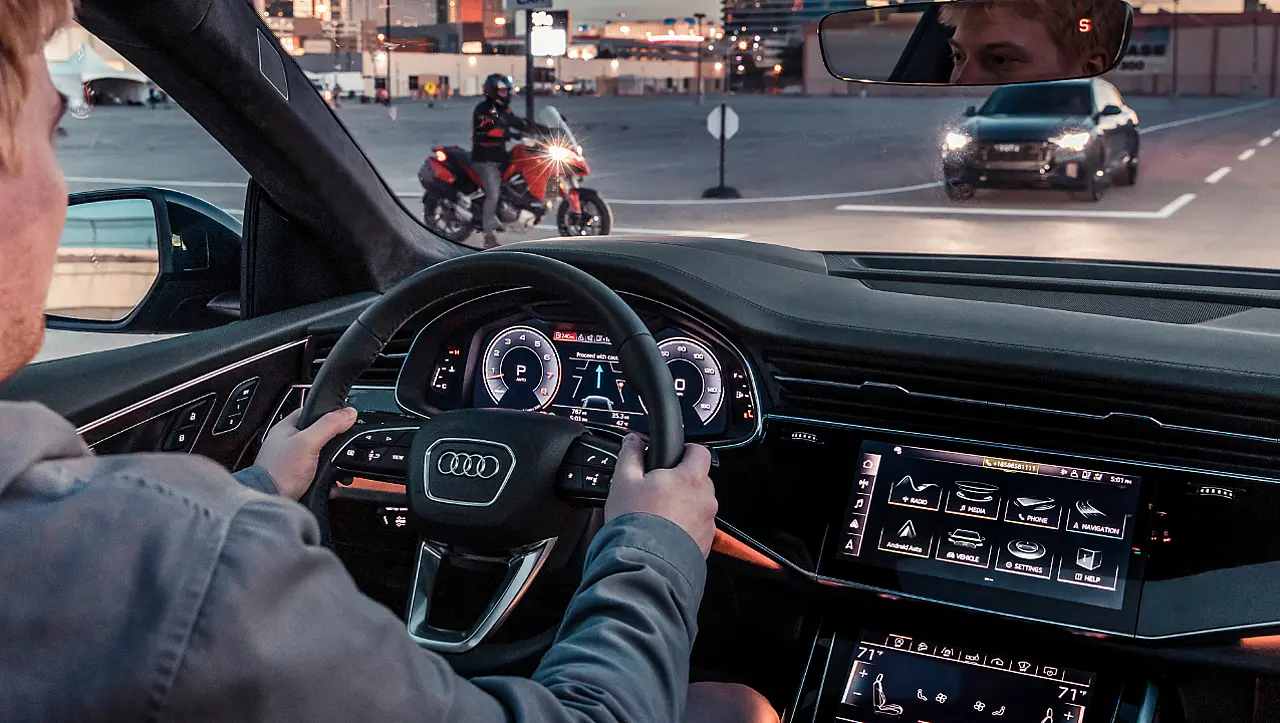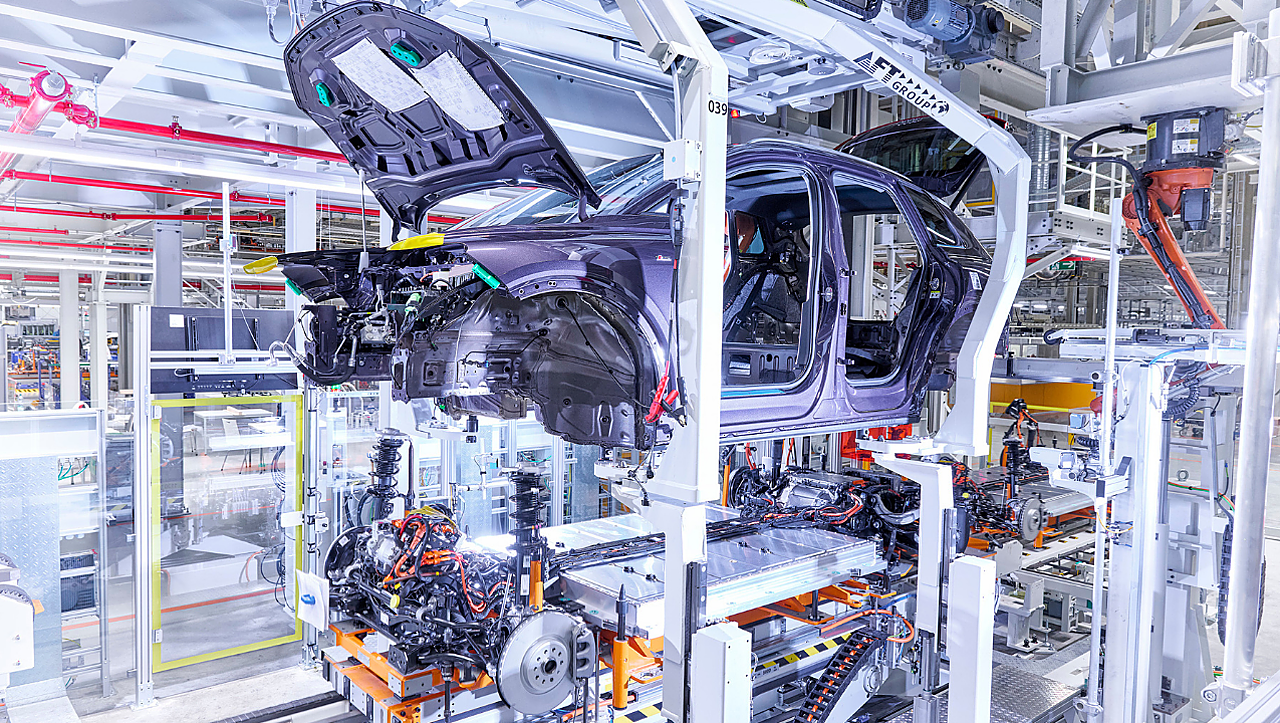
Digitalisation, the process that converts information into a digital format, offers immense opportunity for varied industries. For the automotive, it is an essential driver of transformation as it helps the players in the ecosystem to offer unbelievable features around the vehicle, which can make an essential contribution to the fast-growing networked, sustainable premium mobility.
Here, the software unit CARIAD, the automotive software company within the Volkswagen Group that bundles and further expands the Group's software competencies to transform automotive mobility, plays an important role. It develops a car operating system for the entire Volkswagen Group and creates the conditions for the next autonomous driving functions. VW Group's Audi is creating an ecosystem for electric and autonomous driving. The carmaker is aggressively developing new business models and sales potential – in retail, in the vehicle, and via innovative mobility services. And not least of all, the internet of things, the new 5G mobile communications standard, and artificial intelligence are making production and logistics processes more efficient.
Even now, numerous services and features ensure that cars are smoothly integrated into the company's customers' digital environment. In the future, the models will increasingly become personal experience devices.
The carmaker has comprehensively repositioned itself and is increasingly focusing on software and IT solutions. And it is doing so across all fields – from digital sales structures, e-commerce platforms, and interfaces to smart cities infrastructures to production and logistics.
Upping customer experience
A personalised website improved myAudi app features and additional consultation options; the company is further pushing the digitalisation of marketing, sales, and aftersales. The app enables customers to access important vehicle data and digital services. After the app's relaunch with a new design, new vehicle-related functions will be available to users. In addition, with functions on demand, the customers will be able to retroactively book additional options via myAudi to align the car more precisely with their individual needs.
New possibilities
Digitalisation is also moving forward and offering new possibilities for on-site consultation at dealerships. For example, the customer experience in the new flagship store in Munich's Trudering district is getting better due to interactive modules and large-scale visualisations. Using the most up-to-date configurator, Audi models are presented there interactively in photorealistic depictions. That way, the desired configuration can be shown in 3-D and in-stock cars with similar equipment from other locations, all in real-time. In addition, there is the possibility of Audi Live consultation, in which employees are directly linked with customers via data glasses and, as a result, can be advised on products and services entirely regardless of the online user's location.
Inspiring interior
As the vehicle interior is increasingly becoming a personal 'experience device,' in which living and working spaces are merged, the OEMs look at it as a significant element to show differentiation over the competition.
According to Audi, the high bandwidth of 5G mobile communications will make an essential contribution to an infotainment experience in the car in the future. Smooth and high-resolution multichannel audio and video streaming, video conferencing, and immersive gaming via a VR headset will all be possible. Furthermore, enhanced Mobile Broadband (eMBB) will make high data rates possible for applications that require a lot of bandwidth, which will eventually increase comfort and safety.
Data-driven business models
Using data, the OEMs can better analyse customers' desires to derive product optimisations, new digital services, or business models. As a result, the model portfolio and services can be precisely adapted to different markets and individual customer needs. In addition, it enhances the possibility of expanding business models to new fields, such as traffic reporting and data-based services for safe and relaxing travel, entertainment offerings, or personalised telematics information for insurance products or fleet services.
Digital applications and technologies are not only significantly increasing comfort but also safety. On the road to the 'smart city, the carmaker is already networking its models with traffic lights. And with the start of 5G in China, the company is once again proving its role as an innovation leader in connected cars. Currently, Car2X and C-V2X technologies are the central pillars in that effort.

Production and logistics
Intelligent digital solutions are also increasing flexibility and efficiency in production and logistics. As part of Automotive Initiative 2025 (AI25), Audi is expanding its Neckarsulm location to include a leading factory for digital production and logistics in the Group. Partners like the Fraunhofer Institute for Industrial Engineering, the Technical University of Munich, SAP, and Capgemini support that process.
A variety of pioneering projects with digital technologies like 3-D printing, 5G mobile communications, virtual reality, or autonomous transportation systems are already revolutionising operational processes at Audi and creating synergies and new forms of global networking.
Innovative technologies support Audi employees and reduce difficult physical labour and monotonous movements. Within the framework of various programmes, the OEM is therefore training its workforce for digital tasks. At a higher level, the Audi Academy offers a wide range of training in the futuristic digitalisation field and prepares its employees for the future.
The vehicle manufacturer has also been actively pushing this area forward through its vocational training for several years. For example, prospective mechatronics technicians can receive additional training in 3-D printing, and trainees from factory logistics can practice routine activities via VR.